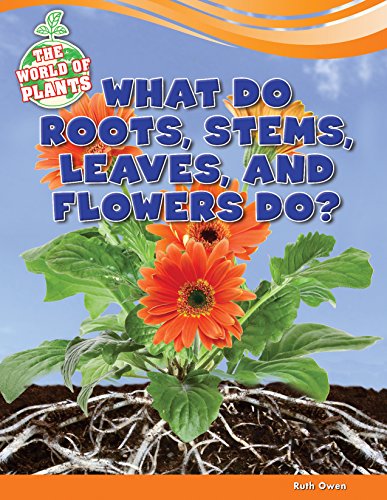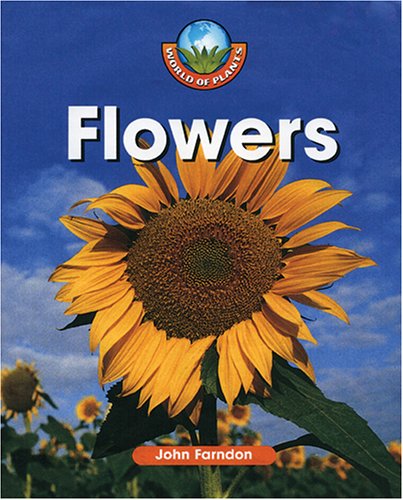-
How Do Plants Make and Spread Their Seeds?
Ruth Owen
Paperback (Powerkids Pr, Aug. 1, 2014)When you blow the fluttering fluff off a dandelion, what is the result? From acorns to pine cones, milk weed to walnuts, plants have a multitude of ways of spreading their seeds and ensuring more plants of their kind grow and multiply. Readers will delve into this vital science topic with zeal as they learn not only the ways plants spread their seeds, but how the seeds themselves are created. O
O
-
How Do Plants Defend Themselves?
Ruth Owen
Paperback (Powerkids Pr, Aug. 1, 2014)Though people dont often think of plants as needing to defend themselves, this book will illuminate the many ways that plants have developed defense mechanisms through subtle change over time. From prickly cactus spines to color changing and camouflage, varied adaptations of several plant species are covered. The illustrative labeled photos bring this fascinating topic to life and reinforce the concepts readers have learned. M
M
-
How Do Animals Help Plants Reproduce?
Ruth Owen
Paperback (Powerkids Pr, Aug. 1, 2014)Readers will explore the ways plants and animals interact and help each other to live and flourish. Labeled full-color photographs will illustrate new terms and concepts, connecting readers to the natural world around them. Easy-to-follow text, helpful diagrams, and clearly labeled photographs will make this topic not only accessible but interesting to readers. M
M
-
How Do Plants Make Their Own Food?
Ruth Owen
Library Binding (Powerkids Pr, Aug. 1, 2014)Explains how plants receive nutrients and what happens when they are not fulfilled, discusses how they contribute to the environment, and describes how they fit into the cycle of life on Earth. N
N
-
How Do Plants Make and Spread Their Seeds?
Ruth Owen
Library Binding (Powerkids Pr, Aug. 1, 2014)Describes how seeds grow, and vary in shape, size, and dispersal patterns, and how everything, from flowers to fruits, begins with a tiny seed. O
O
-
What Do Roots, Stems, Leaves, and Flowers Do?
Ruth Owen
Paperback (PowerKids Press, Aug. 1, 2014)Flowers are more than just beautiful, fragrant objects for our enjoyment. Pink petals, green stems, dark unfurling leaves: though we have seen them countless times, do we truly know what they are there for? In this title, readers will learn in detail the many parts of a plant. S
S
-
How Do Plants Grow?
Louise Spilsbury, Richard Spilsbury
Paperback (Heinemann, Sept. 14, 2005)Looking inside a seed. We’ll look at a cut-open bean seed and talk about the food store and the baby plant and the seed coat. The baby plant in a seed stays safe and warm inside the seed coat until it is ready to start growing, usually in spring when the weather is warm and wet. M
M
-
Where Do Plants Grow?
Louise Spilsbury, Richard Spilsbury
Paperback (Heinemann, Sept. 14, 2005)The place where plants live and grow is called their habitat. Different types of plants grow all over the world in many different kinds of habitats. Plants need light and water to live. Some habitats are cold and dark. Others may be hot and dry. Plants have different ways of surviving in these different habitats. M
M
-
How Do Meat-Eating Plants Catch Their Food?
Ruth Owen
Paperback (PowerKids Press, Aug. 1, 2014)Who knew plants could be so terrifying? In this fascinatingly gruesome science title, readers will learn how infamous meat-eating plants such as the Venus flytrap catch their prey. With well-organized and clearly articulated text, readers will easily grasp important life science concepts. M
M
-
What Is a Plant?
Louise Spilsbury, Richard Spilsbury
Paperback (Heinemann, Sept. 14, 2005)Plants are living things. Like us they grow, feed and produce young. There are lots of different kinds of plants, from weeds to trees. They may look different but we can group them together because they have some important things in common. L
L
-
What Do Roots, Stems, Leaves, and Flowers Do?
Ruth Owen
Library Binding (PowerKids Press, Aug. 1, 2014)Flowers are more than just beautiful, fragrant objects for our enjoyment. Pink petals, green stems, dark unfurling leaves: though we have seen them countless times, do we truly know what they are there for? In this title, readers will learn in detail the many parts of a plant. S
S
